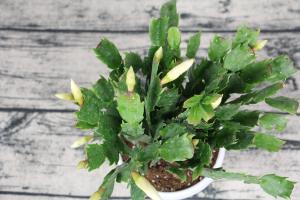How to Plant Tomatoes in Deep Water Hydroponics
Hydroponics is a popular method of growing plants without soil, and deep water hydroponics is one of its variations. This method involves suspending plant roots in a nutrient-rich solution instead of soil. Tomatoes can be grown using this technique, and they tend to produce a high yield. Below are the steps to follow when planting tomatoes in deep water hydroponics.
Step 1: Choose a Planting Container
The first step is selecting a suitable planting container. The container should be tall enough to allow roots to grow, and it should have a lid to prevent light from entering the nutrient solution. Plastic containers or buckets can be used, but ensure that they are washed and sanitized before use.
Step 2: Preparation of Nutrient Solution
Next, it's time to prepare the nutrient solution. Follow the manufacturer's instructions to make the solution or create your own. A tomato requires a nutrient solution with a balanced pH level, adequate phosphorus, potassium, nitrogen, and other trace minerals. Check the pH level of the solution regularly to ensure it's within the desired range.
Step 3: Add Growing Media
Add a medium for support and anchoring the roots. Clay pebbles or hydroton are the best options because they're lightweight, porous, and provide excellent drainage. Fill the container with the medium to a level that will support the roots.
Step 4: Planting the Tomato
The next step is planting the tomato plant. Take a young tomato that has been grown from a seed, remove it from its pot gently, and wash off the soil. Place the tomato plant in the container's net pot, ensuring that the roots are well covered with the medium, and the top sits above. Remember to keep the lid on the container.
Step 5: Add the Nutrient Solution and Maintain
Add the nutrient solution to the container until the water level reaches the base of the tomato's stem. After that, ensure that the water level is always maintained. Too much or too little water can negatively affect the plant's growth. Check the pH level of the nutrient solution regularly and adjust it when necessary.
Step 6: Lighting and Temperature Control
Tomatoes require sufficient light to grow appropriately. Place the container in a well-lit area or use artificial light. The temperature should be constantly maintained at approximately 70-80 degrees Fahrenheit. This temperature usually produces the best results for hydroponic tomato growth.
Step 7: Crop Maintenance
Regular pruning and transplanting are required for hydroponic tomatoes to flourish. Prune your tomatoes whenever necessary to allow for healthy growth. Transplant the tomato plant at least once in its growth cycle to prevent the roots from becoming too large and affecting plant growth. Ensure the water level is maintained throughout the growing cycle.
Conclusion
Growing tomatoes using deep water hydroponics is an effective way to grow the plant without the need for soil. These seven steps outline the process of setting up and planting hydroponic tomatoes. By following them, you should be able to maintain a healthy and high-yielding crop of tomatoes in no time.

 how many times do yo...
how many times do yo... how many planted tre...
how many planted tre... how many pine trees ...
how many pine trees ... how many pecan trees...
how many pecan trees... how many plants comp...
how many plants comp... how many plants can ...
how many plants can ... how many plants and ...
how many plants and ... how many pepper plan...
how many pepper plan...





























